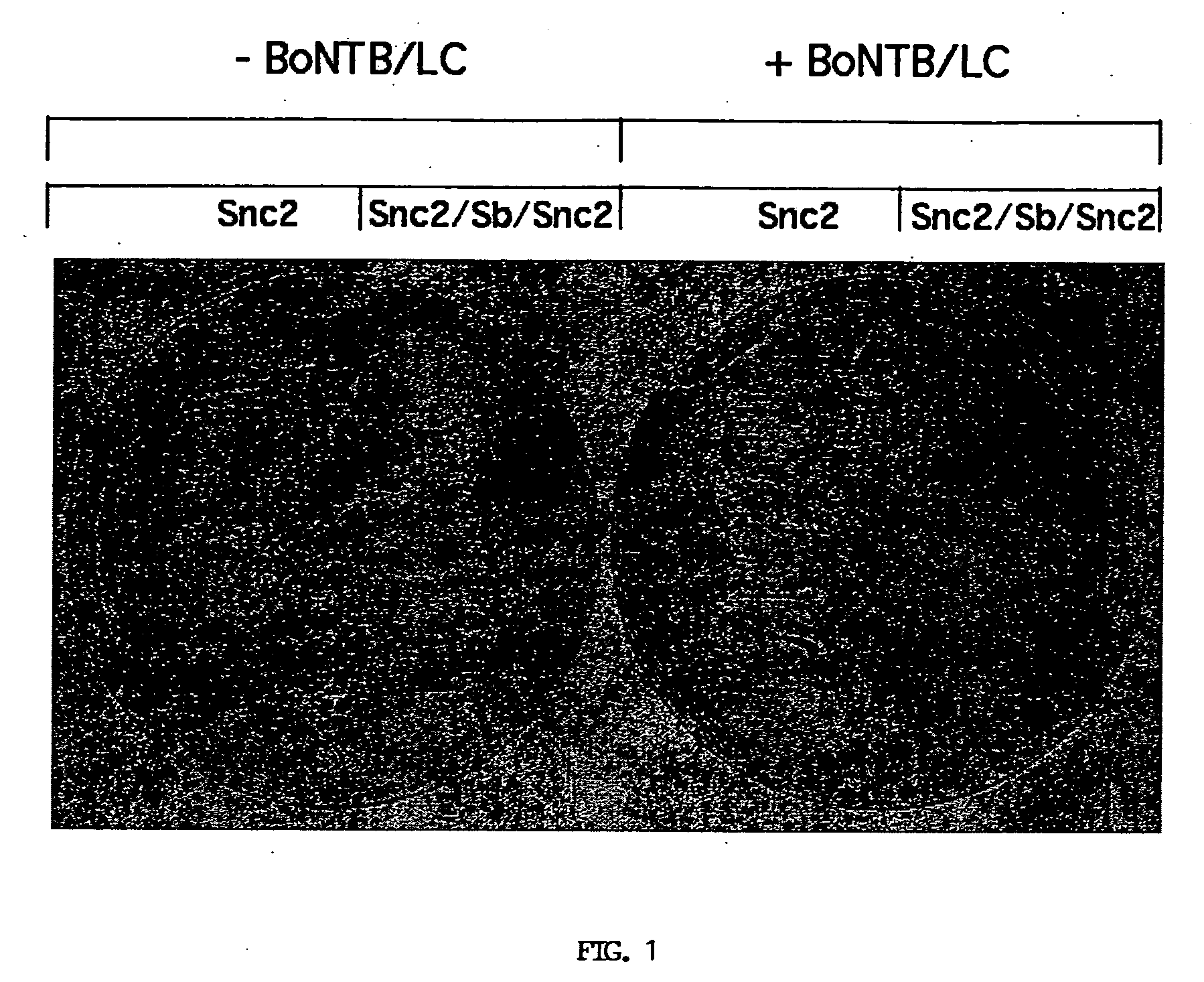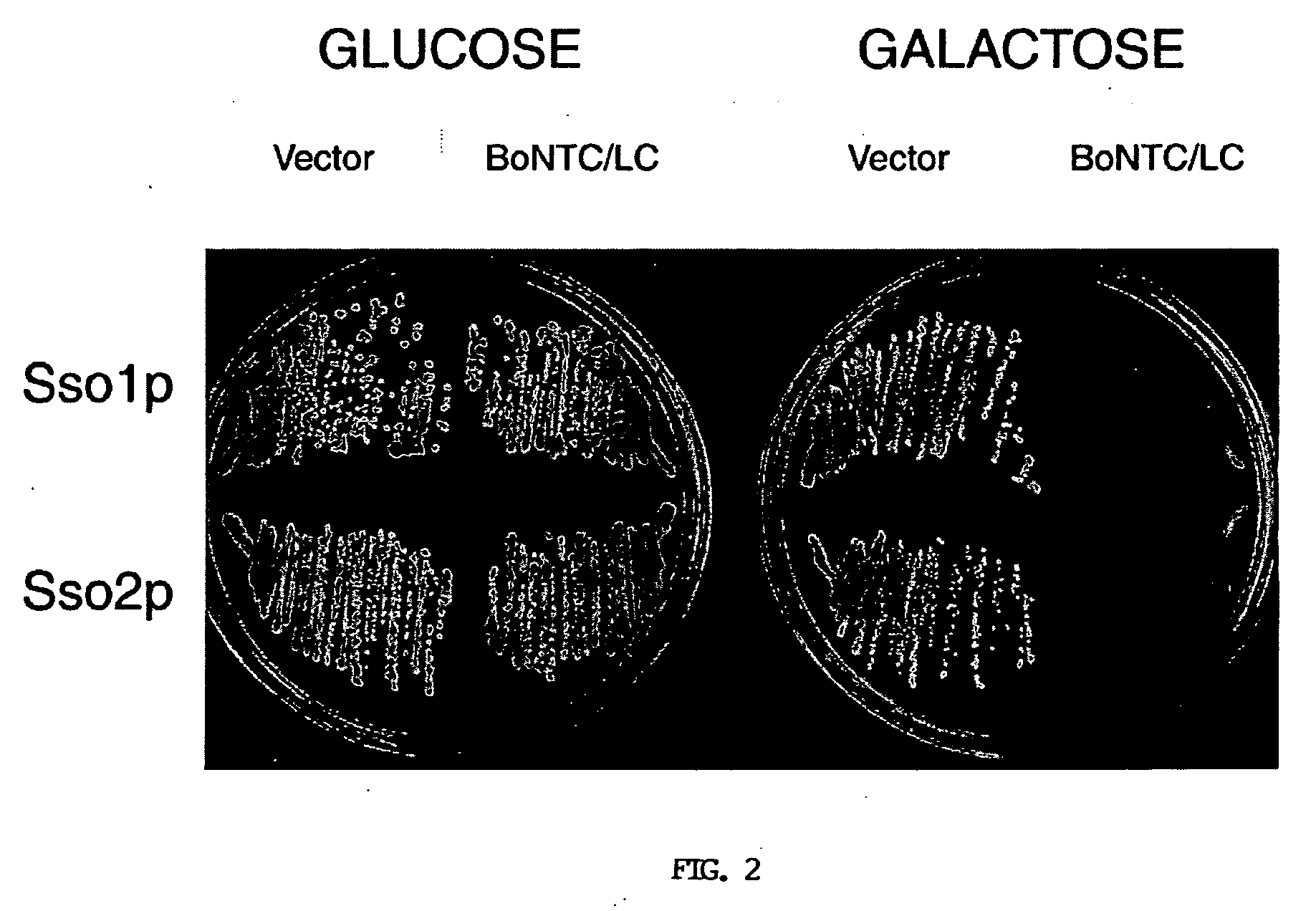Cell-based assay for identifying peptidase inhibitors
a peptidase inhibitor and cell-based technology, applied in the field of microbiology and pathology, can solve the problems of reducing the effectiveness of drugs, limiting the susceptibility of bacteria to various antibiotics, and not reducing the effects of toxins already produced, so as to improve and assess the viability and/or growth of yeast cells
- Summary
- Abstract
- Description
- Claims
- Application Information
AI Technical Summary
Benefits of technology
Problems solved by technology
Method used
Image
Examples
example 1
[0090] A method is presented which allows one to directly select for intracellular inhibitors of the light chain (LC) peptidase of botulinum neurotoxin (serotype B) BoNTB and other bacterial toxins. A yeast mutant that would be susceptible to the lethal effects of intracellular BoNTB / LC was generated. This toxin is an endopeptidase that cleaves a specific QF peptide bond in synaptobrevin (Sb), a neuronal cell protein that is required for vesicle fusion to the presynaptic membrane. Yeast (Saccharomyces cerevisiae) possess two functionally redundant Sb homologs, Snc1 and Snc2, that are essential for secretory vesicle fusion to the plasma membrane. Snc1 / 2 are structurally and functionally related to Sb; however Snc1 / 2 lack the QF sequence that is recognized by BoNTB / LC. Therefore, whether a Snc2 protein that contains a portion of Sb (with the QF sequence) could be rendered inactive by the expression of BoNTB / LC in yeast cells was investigated.
[0091] Two yeast strains that lack Snc1 we...
example 2
[0093] In a second embodiment, the inventors synthesized the gene corresponding to BoNTC / LC, eliminating A / Trich stretches without changing the amino acid sequence. The gene was then placed under control of the GAL1 promotor, which can be regulated in yeast: ON in the presence of galactose and OFF in the presence of glucose. The GAL1-BoNTC / LC construct and a control plasmid vector lacking GAL1-BoNTC / LC were then introduced into yeast cells that expressed either Sso1p or Sso2p. As shown in FIG. 2, the vector control and GAL1-BoNTC / LC were not lethal to yeast cells that were grown in the presence of glucose (left hand dish). In addition, the vector did not interfere with cell growth in the presence of galactose (right hand dish). Importantly, the GAL1-BoNTC / LC construct strongly inhibited cell growth in the presence of galactose (right hand panel). These data demonstrate that BoNTC / LC exerts a severe growth defect on yeast that express either Sso1p or Sso2p.
[0094] A clue to the subst...
PUM
| Property | Measurement | Unit |
|---|---|---|
| pH | aaaaa | aaaaa |
| pH | aaaaa | aaaaa |
| temperature | aaaaa | aaaaa |
Abstract
Description
Claims
Application Information
 Login to View More
Login to View More - R&D
- Intellectual Property
- Life Sciences
- Materials
- Tech Scout
- Unparalleled Data Quality
- Higher Quality Content
- 60% Fewer Hallucinations
Browse by: Latest US Patents, China's latest patents, Technical Efficacy Thesaurus, Application Domain, Technology Topic, Popular Technical Reports.
© 2025 PatSnap. All rights reserved.Legal|Privacy policy|Modern Slavery Act Transparency Statement|Sitemap|About US| Contact US: help@patsnap.com



